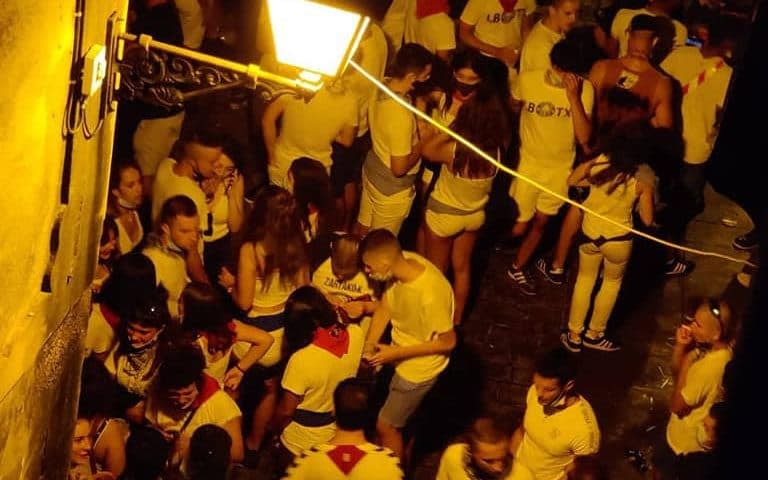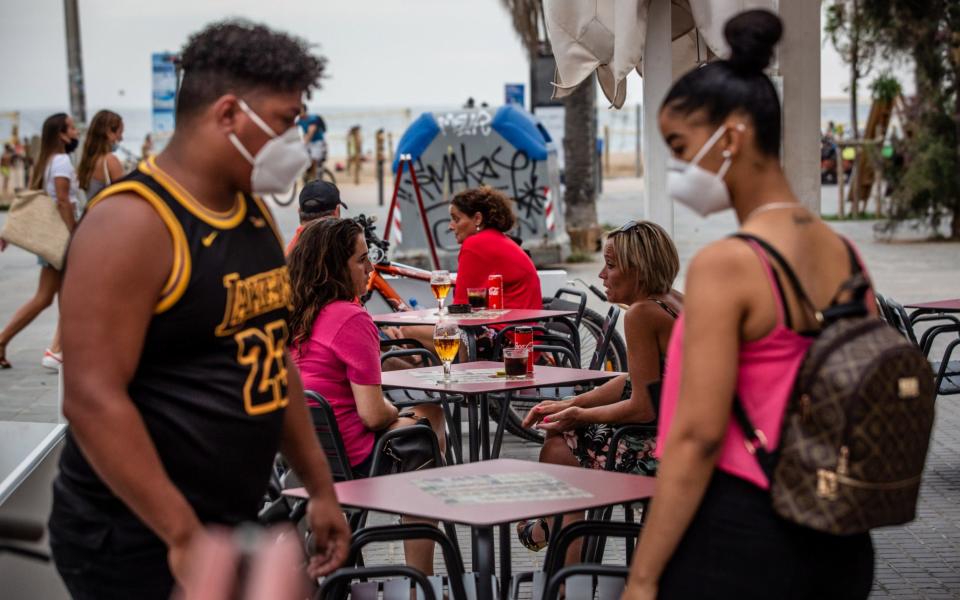Spain can’t stop partying: Late night discos and sauna socials pushing Covid rate to soar further

Spain is pleading with young people to stop socialising at illegal parties as the country's monunting Covid caseload continues to lead the way in Europe's impending second wave of infections.
In spite of the warnings from authorities to rein in expansive social behaviour, in the early hours of Thursday Madrid police caught and fined 73 people who had sidestepped a ban on late-night discotheques by partying in a basement sauna in the capital’s main business district. No one was wearing a face mask.
Last weekend, a few blocks away, 75 people were caught in an unlicensed premises operating as a bar and brothel, openly defying Spanish government orders to close down bordellos.
The city is one of the worst-hit places in Spain, with hospitals recording an alarming rise in admissions.
The government launched a campaign this week to deter youngsters from underplaying the danger of Covid. Hashtagged #EstoNoEsUnJuego (#ThisIsNotAGame), the black-and-white video juxtaposes young people gathering to drink in the street with images of people in hospital, ending with a less-than-subtle coffin on a gurney.

Fernando Simón, the head of the health ministry’s Covid-19 department, has pleaded with young people to ditch parties, saying “there are alternative ways to have fun without putting anyone at risk”, while also appealing to social network influencers to reach out to the young and convince them to follow the rules.
After Europe’s strictest lockdown was lifted on June 21 just as warm summer weather arrived, Spain’s younger generation returned to the streets, bars and clubs as all establishments were initially allowed to open, albeit with restrictions on the use of dance floors and the requirement to wear as face mask – except when drinking.
Spain’s Covid-19 caseload is now rising more rapidly than in any of its European neighbours, with more than half a million total known positives and the transmission rate now standing at 235 confirmed cases in the past 14 days per 100,000 inhabitants. This compares to 126 in France, the UK’s 37 and just 29 in Italy.
The explosion of Spanish nightlife has been targeted by Spanish authorities as one of key causes of the uptick in coronavirus cases through July and August, leading to a national agreement between the central and regional governments to shutter all bars no later than 1am, with last orders at midnight.
But the party is often not in a regular establishment in Spain, where huge numbers of young people tend to gather for outdoor drinking gatherings known as ‘botellones’ or raves in the open air.
On the last weekend in August police broke up a party of more than 100 people on Valdevaqueros beach near Tarifa, 300 saw their botellón interrupted in the town of Benimaclet, while 160 were caught enjoying a rave in a warehouse in Barcelona’s port area.
“It’s true that we have more interactive social behaviour than other countries. Almost nothing can be celebrated in Spain unless it is in a large group,” says Ildefonso Hernández, a professor in public health from Miguel Hernández University in Alicante.
“The number of meetings people have is very high, family life is very active, and we are seeing that a large number of outbreaks are caused by family occasions.”
Social gatherings, including family events, have been limited by several regions, including Madrid and Catalonia, to 10 people, while Murcia is the strictest with a maximum of six people.
Spanish health ministry figures show that around 25 per cent of new cases are being found in people aged 15-29, part of the reason, as well as higher detection levels, that the mortality rate is as low as 0.6 per cent, with less than five per cent requiring hospital treatment.


